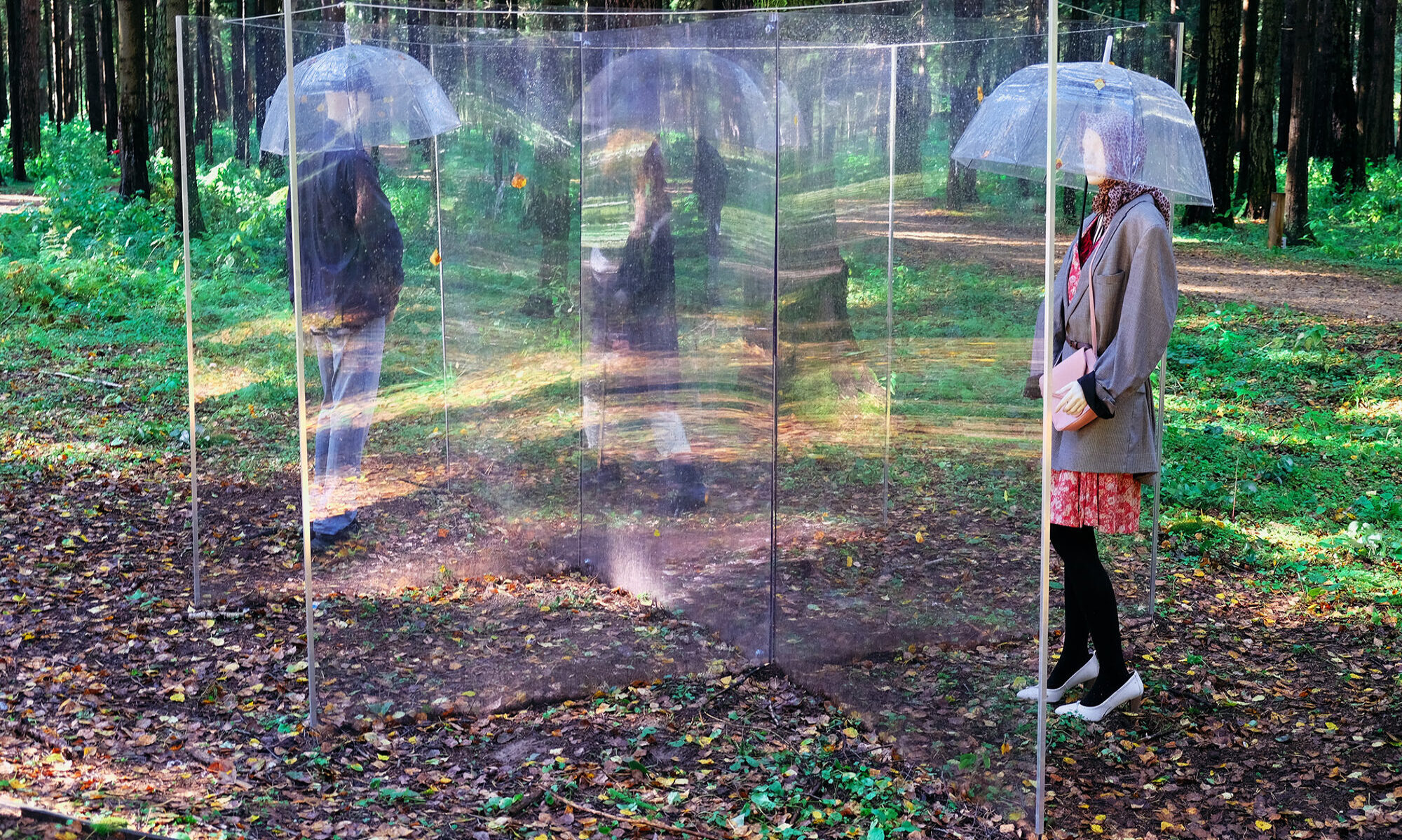George Kiesewalter
The Artist-Collector. A Utopia Project

On the formal side, the project consists of the presentation of a new ‘collection’ of stamps, postcards, and envelopes, created for an art museum by a certain artist-collector who suddenly decided to combine the almost forgotten ingenious images of Soviet ideology, embodied in tiny ‘non-artistic’ standard issue stamps and other postage items, with the ideas of modernism, including the Russian avant-garde and its primary goal of revealing the social image of the new man. This creative combination should double the impact of the energy of heroism, courage, and love of life on the audience.
Détournement is a relatively old technique. Yet, this work’s method could be best described as ‘deceptive détournement,’ because public art (postage stamps) is embedded in a new context, constructing a different meaning for the viewer and simultaneously making him think about the historical source and its fate. I first resorted to this method in the 1984 triptych Cultural Revolutions, where I used the new and old languages of communication and modernism to illustrate Roland Barthes’ idea that art is born at the intersection of languages.
The project is based on the now-gone iconostasis of the new religion of the first decades of Soviet power, stripped of its ideological imperatives through transformations. Looking at the paintings in The Artist-Collector exhibition, it becomes clear that the Soviet set of images was in fact quite fine and could shine with new colours and meanings in a different kind of environment. While working on the project, I made a curious discovery. The author and protagonist of the project gradually merged with the images and began to reproduce them in his own painting, rebranding the old ideological clichés.
Indeed, the ‘collector’ began his work with the transformation of standard postage stamps and the creation of original postage signs. However, he gradually moved on to painting a pictorial series of ‘new icons,’ using the images of the stamps’ heroes and avant-garde art without a postal entourage, and transferring to canvas the other artefacts from his collection (postcards, first-day envelopes, etc.), which sometimes reveal other meanings to the viewer through the combination of seemingly contradictory elements, new paraforms and colour schemes in the paintings.
Conceptually speaking, I began working in the more familiar Russian technique of the ‘character artist’ in the early 1980s in a series called The Museum of Vasily Belov. The late Soviet Era of Stagnation was marked by the opening of countless new museums of famous and unknown figures of the Soviet regime. According to the script of that series, the artist, Vasily’s friend, set out to preserve for posterity the artefacts of the life of an ordinary Soviet man, a driver, who wanted to become a journalist and had already planned his whole life…
Another project, For Official Use Only, appeared in 1990-1992. It featured a retired General Staff colonel who decided to make art and produced a series of works resembling military maps hidden behind curtains. Such a series significantly altered the subject-object relations within the project. With the help of an intermediary (a character) and the appropriation of canonical art samples (détournement), the artist had the opportunity to escape for a while from the already-established style and create something completely new and unexpected. At the same time, the artist could lay all the responsibility on the character (an alter ego), hiding behind the veil of the extravagant narrative: “That’s not me. That’s him!”
Finally, returning to The Artist-Collector, I feel it extremely important to allow the contemporary viewer to seriously reexamine the true archetypes of Russia and the canonical images of Soviet propaganda, to feel the conceptual connection of our time to the de-ideologized legacy of the 20th century. Fundamentally, this project is my 21st-century mediated account of Russian history, viewed through the prism of the [postage] signs and symbols of a bygone era.
2012-2023
More about the project at https://artfocusnow.com/people/georgy-kiesewalter-on-postage-stamps-as-witnesses-of-soviet-history/
and https://mdz-moskau.eu/maler-georgi-kiesewalter-das-war-oft-fuer-den-westlichen-betrachter-unverstaendlich/
You are invited to watch the project video (in English) at https://youtu.be/TBndK7Nci_M



















